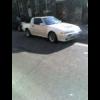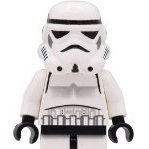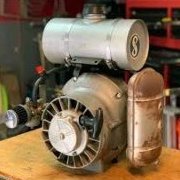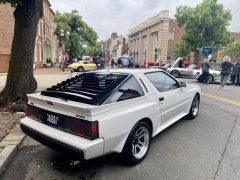-
Posts
2701 -
Joined
-
Last visited
-
Days Won
69
kev last won the day on October 22
kev had the most liked content!
Profile Information
-
Location
PA
-
Gender
Male
Contact Methods
-
ICQ
0
-
Website URL
http://
Previous Fields
-
Zip Code
17202
-
Model
Other
-
Type
Other
-
Model Year
1987
-
Interior Color
Black
-
Status
On the road
Recent Profile Visitors
33313 profile views
kev's Achievements
-
Oh, I think I saw that same picture on FB the other day. Yeah, they have a slightly different look. So, do they fit our widebodies? I'm assuming these are EU spec markers? The earlier model flatbody markers look similar but the screw hole is in the wrong spot to mount it on a widebody car. Not that you can't modify it to make it work but it doesn't just bolt on. I do like the 'line' through the light on the earlier flatbody markers. Same thing with the B-pillar panels with having the two louvers. Adds a little different look to the car...but, makes me just want another earlier model flatbody car again.
-
It's most likely a vacuum advance. Can test it with a vacuum pump to see if it holds but I've seen these sometimes hold vacuum but not boost. The diaphragms rot away with time. Unfortunately, the suppliers who use to carry aftermarket vacuum advances have seems to stopped. Mikie has been trying to work with them to get batches made but this has been an issue for a few years now. The only current solution is to buy the full distributer....so what was once a $15 purchase for a typical starquest 'tune-up' is now $250! it sucks but one of the things we face with these already rare cars approaching 40 years of age.
-
I've experienced this same issue multiple times. Can't fully explain it, electrical is not my strong point, but when the clutch is engaged, it enables the clutch switch used for the cruise control (basically like an inhibitor switch on an automatic but only used to disengage the cruise control if the clutch is depressed on a manual). I can't remember if it closes the circuit or opens it when the switch is engaged. Anyways, I've noticed that the idle is absolutely affected depending on when the clutch is depressed or not. How and why...I don't know but it is I proved it by pulling the switch off the pedal and depressing it by hand. How I fix this is to rerun the TSC/ISC reset procedure until it resolves the issue. Basically, depress the switch and run the TSC/ISC and set the idle accordingly. Then see how it runs after the switch is let go. Tweaking the idle settings between the two. For a quick fix if you don't use cruise, unplug the switch and see how it runs (or connect the leads depending on the 'normal operation'...like I said, I can't remember if the circuit is normally open or closed when the clutch pedal isn't engaged). As much as I love these cars, I hate our engine management systems especially anything pertaining to idle. I've done the TSC/ISC reset over 20 times on a single day until I got it to be somewhat what I wanted it to be during all operating conditions...and it still goes erratic at times but won't stall.
-
For once, I'm not doing too much work on a conquest...knock on wood. Been driving my black 88 a lot since the collision repair and really enjoying it. So much so that my blue 87 has only been backed out of the garage bay once in the past six weeks or so and pulled right back in after changing some light fixtures in the bay. I'm in the process of cleaning up my garage in preparation to actually start sheet metal work on my 68 mustang. But also have to address my broken garage heating system before the temps drop too much. kev
-
Do you still need the info regarding those foam inserts in the sides of the engine compartment? The ones the harnesses pass through? I ran into one the other day in my garage. It isn't the easiest thing to measure because it is cut on an angle (both the OD and the ID hole). But I can snap a few photos with a ruler in the picture if it would help?
-
i saw your post on FB. Welcome back!
-
Of course I'm going to show the finished photos! I'm very happy with the final result. All the gaps looks great, the paint looks great, the decals look great, the wheels look incredible! If it weren't for the condition of the passenger door, drivers fender, hood, and roof that are all original paint and have many door dings, this car would look brand new. Taking it out for a drive. Runs good, no vibrations from the bubble balanced wheels, etc. The rear decal appears a little 'bold' compared to stock. Line width is a little thick. But, definitely looks better than it did You can see the door dings on the passenger door in this photo. One of the future challenges for myself is to learn paintless dent repair. I have experimented with it some last year and did pull out a larger dent on the drivers fender. It's still slightly visible though. Favorite shot....still can't believe I hand pulled the frame, core support, and other engine compartment structure good enough to make all of these panels fit like this! It's very rewarding.
-
Assembly: This was the first time I had removed the passenger rocker panel cover on this car. I was kind of worried that I'd find a rust hole or something. But, in the nature of this car, it was great! Minor surface rust at the overlap joint, as usual. Cleaned that up and coated it. But from here on out, it was the normal assembly...of which I did like 30 times by test fitting along the process. That original black headlight cover looks a bit out of place now....of course I polished that up before the end of the day Gluing on the rubber strip on the grill. I stopped assembly at this point for a bit as I let this dry Next up were the new rims: I purchased new tires for the rear, last week, but I am reusing the fronts...for they only have a couple thousand miles on them and are like brand new. I have had a harbor freight tire changer now for several years. I had used it to change tires on my utility trailer and other projects with steel wheels. Worked good for those applications especially in that this thing was only like $35 originally. But, it would mess up alloy and aluminum wheels. So, I did what I really enjoy doing and modified it. Beefed up the bead breaker mechanism with longer and thicker pipe and reinforced breaker. And I added a homemade duckbill attachment (well, the duckbill itself was bought from amazon for like $10...plus some clamps and roller bearings which were also cheap, aluminum centering bushing, and some scrap steel). Removing the tires from the front rims: Bead breaker worked amazing! And the duckbill worked flawlessly! And installing the fronts on the refurbished rims...: The duckbill mod is so slick. Just walked the tire on the rim! The rears took a little more 'oomph' to install just because the tires were brand new compared to the fronts, but still were installed with ease Then came balancing. Cheepo amazon bubble balancer. It was hard to see the bubble at times but a flashlight helped. Used stick on 1/4 oz weights on the inside of the wheels. Worked well for what it is. Definitely not as precision as a spin balance but does the job: Photo looks like it was uncentered but it was my camera angle. Can't believe how simple it was to tackle this! No driving to a tire shop, paying $35/wheel, arguing with the guy not to use lip weights, worrying about him marring the wheels I put so much effort into restoring..etc. Decals: While I was working on installing the tires, the mailman shows up and delivered this! I went to work removing the existing decals on the hatch and drivers fender. One of those $10 vinyl decal erasers and some polishing with the buffer.... This hatch and rear spoiler is still OEM paint! And installing the decals. Used the 'wet method'. Installing and squeegeeing them smooth. Leaving the application paper on until they dried. After a half an hour or so, I peeled off the application paper. The header panel decal was the hardest being that it had the small letters and there was one area that kept lifting. It took two minutes to do all the paper on the rest but about 20 minutes of finesse getting the front one off. Also, installed the grill...didn't show photos of that...it's two screws.
-
Most likely BK227WS with the 24mm, with the snap ring, input bearing. The BK227AWS is for non-intercooled applications and has the 21mm bearing. Although, I have seen an 87 transmission with the flanged input shaft bearing! Maybe a fluke...maybe someone replaced the pan or something. Not sure, but it was a stamped steel pan KM132 out of an 87 and had the 88/89 input shaft bearing in it! That kit will give you the main ball bearings, syncs, and gaskets/seals needed to do a basic rebuild. It will not have the needle roller bearings that are in each gear set. It won't have the retainer or shift works as well. It does include a main shaft nut though. But, more importantly, it doesn't include the shims needed to shim your countershaft. That was the biggest **** when I rebuilt mine. Mitsubishi sold the shims individually. I ordered a few based on some quick measurements. Came from Japan, 4-6 weeks. Turns out, when I torqued everything down, I had more play than measured and needed to order a thicker shim. Ordered a few more of different sizes...again 4-6 weeks. Have no clue if they are still available or not. If I had to do it again, I think I would work with a local machine shop to have some custom shims made for it. Coupled with the lack of available parts, the disassembly is a PIA. Lots of frustrations with pulling the bearings including making custom pullers, etc. I recently added a few more photos to the end of my KM132 rebuild thread in the FAQ forum to show my custom main shaft center bearing puller. I also saw a guy on FB use a harbor freight 20T press to drive out the bearing. Not that I'm advocating a swap, I hate swaps, even if it is just the tranny....but, it may be the easier way to go (and more enjoyable/rewarding).
-
Yes, at least for a basic rebuild. Listed under KM 131 at cobra transmission. KM 131 Standard Transmission Parts | Cobra Transmission
-
I had a very productive holiday weekend in terms of working on this car. I completed all the wet sanding and paint prep. Fabricated a support to spray the bumper assembly and front fascia, and put the components in BC/CC. I also performed my coolant flush on the car itself and put back in the t-stat...which cured my drivability issue. Some photos: Staging for paint following completion of final wet sanding with 400 grit and then 600 grit In base (PPG shopline serbia black 2 coats): In clear (SPI Universal clear - 2 coats) One very minor run (picture is fuzzy) Reflection: I'm very pleased. This was probably my best spray to date! I took the time to clean clean clean everything. Got my garage fairly well clean as well, although there is a lot of junk in it. Two box fans in the far windows...the opposite windows open/screened. Wet the floor prior to both BC and CC. Tyvek suit, etc. The homemade support to mount the bumper assembly, header panel, and grill worked incredible! $10 of 2x4s and a few quick cuts with the miter saw..clamping it to one of my existing rolling carts. It really made life easy when it came to spraying. Upped my pressure to my gun by a few psi's (41 psi). Dropped my tip size down to 1.3. Reduced my fan size per a recommendation on youtube. I use a devillbis GFG-670 plus gun, btw. It's 20 years old but works great on clear. I should have opened my material up a hair more but it worked well. Most painters set the material to full trigger and throttle as they paint....I'm not good enough for that yet. I set my material based on some test sprays and pull it to the stop on each pass. The result...no sags, minimal 'factory-like' peel, very minor dust (expected given my 'booth' conditions), with one very minor run on an edge (shown above). Run is an easy fix, but given how this paint laid out, I'm NOT going to wet-sand/buff. Which is an absolute first for me. It looks too good as it is. Six months invested in this project, I'm going to move forward instead of potentially creating new problems. If that run bothers me after assembly, I'll address it. But given the state of some of the untouched body panels, like the hood and passenger door (riddled with door dings), I'm fairly positive this little run and a couple little dust in the paint will not draw any attention. I washed the car off such that everything is clean for reassembly. Next weekend, I plan to bolt everything on the car. I ordered new vinyl decals from MKS this morning. Hopefully those arrive by the weekend. I also want to consider removing the existing decals on the other fender and hatch and replace with new (not a rush). Also ordered new rear tires this morning to finish my project that was started before the accident...putting on my spare 7/8s, of which I did the paint work on during this accident repair (photos earlier in the thread). kev
-
It may be worth changing the FPR, although I'm not sure that is your problem. Have I ever checked a stock FPR for leakdown with vacuum?....no. Although, the fuel pressure does drop with time. If it is building 30 psi at idle, it seems to be functioning. You could consider putting a 'whip' on your pressure gauge such that you can route it up to the windshield to monitor it while driving. You could put some washers under one of the hood hinges to give you enough clearance to pass the hose through. I wouldn't recommend running the hose through the firewall being that it would be pressurized with fuel. MKS sells replacement adj rate FPRs. There is also a company called SPAturbos that sells them...which look identical to the MKS ones (not sure the true source). Although I saw some people lately complaining that the mounting studs were incorrect on the SPA ones....but I have one of these and had no issue (mine was installed last year...sounds like they are having a recent quality control problem) For only $15 difference, buy from MKS and support a SQC member. When I bought mine, there was a larger price delta. Both places use to have a non-adjustable version but I don't see them anymore on either page. Dodge Conquest / Mitsubishi Starion Fuel Pressure Regulator FPR – SPA TURBO USA G54B Adjustable Fuel Pressure Regulator - MKS Motorsport
-
-
Been a bit since I posted an update. Unfortunately, I haven't been working on this car too much the past few weeks but have been doing a little. Here is how far I had to block the fender down to get it smooth. Wet sanding this with 320 grit....took forever but I didn't expect to have to go so far. Last time I use 80 grit on a DA without taking it to bare metal..that is for sure. The remnants of the black primer show the low spots and areas of attention After the first round of body filler. I believe I'm using Evercoat Rage Extreme...which is the same that I used on on the previous body work on this car a year or so ago. I used to use Evercoat Rage Gold. This stuff sands a little easier and has less pin holes but not sure which I really like better...they both do the job. After the second round. I did add some filler to the front of the fender where I couldn't 'feel' a depression but with the way it was sanding, I'm pretty sure I had a minor low spot. So, I added filler and blocked it well. Filler was rough cut with 80 grit, then shaped with 180 grit, and then over with 220 grit. Went over the full fender again with 220 grit....yes, negating all of my 320 wet blocking but I need this primer to stick. The rocker panel trim had some dings that needed to be filled as well. For the header panel, I had a few very minor small dints resulting from stone chips. Of which, I used polyester filler, Evercoat Glaze Putty. I didn't feel that these needed the Rage Extreme filler. Lots of cleaning up and then back into epoxy primer After letting it dry for a day: I'm pretty happy with it. The fender is looking good. I nice wet sand with 400 grit and it is ready for BC/CC. Same goes for the rocker panel trim. Although I missed a very little ding on the header panel which will need some polyester putty. But then a wet sand with 400 grit and they should be good to go to BC/CC as well. Close up of the header panel...if you look hard enough, you will see the ding. As for the plastics: I started to wet sand the bumper and it is coming out nice. I believe I'm down to 400 grit wet sand on everything and I'll be ready for paint. The summer is almost over, and I really want to get these parts painted before the temperature starts to drop (due to the clear activator that I bought). So, I have high hopes of wet sanding/cleaning everything and then painting this weekend! Wish me luck!
-
I'd have to see a photo. The stock setup doesn't have a 'screw in the middle'. Although the aftermarkets usually have a typical banjo bolt for the stock banjo fitting. Like the bolt shown in this photo: I will say that I have cut the banjo end off and used worm clamps on one of my former cars...of which, I reversed that decision about a year later. I wouldn't recommend it. In my case, I was using a larger fuel pump that didn't have a banjo style connection....the larger fuel pump ended up causing cavitation resulting in loss of fuel pressure and overheating the pump. So, the worm clamps didn't fail or anything but still. Most of the aftermarket fuel pumps allow you to connect it to the stock fuel line.








